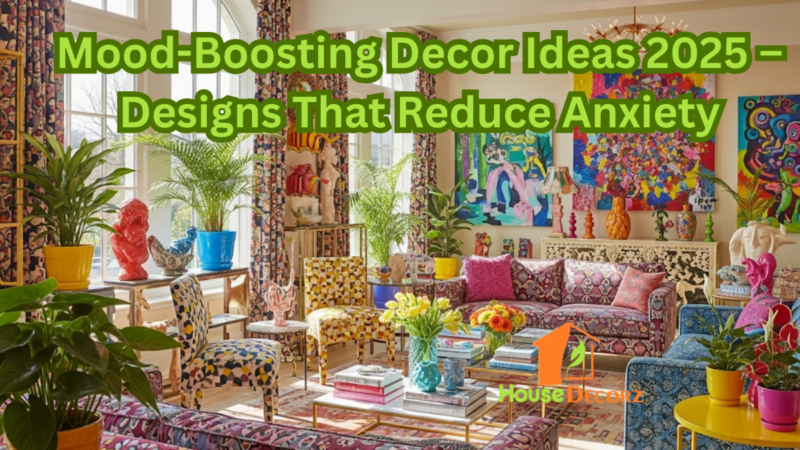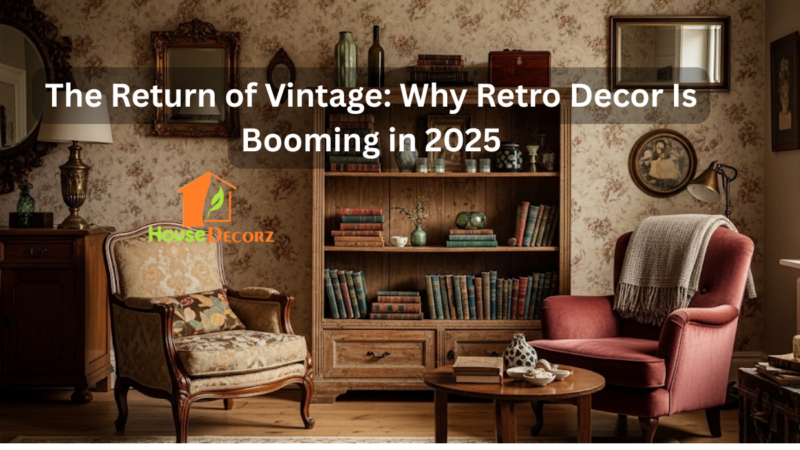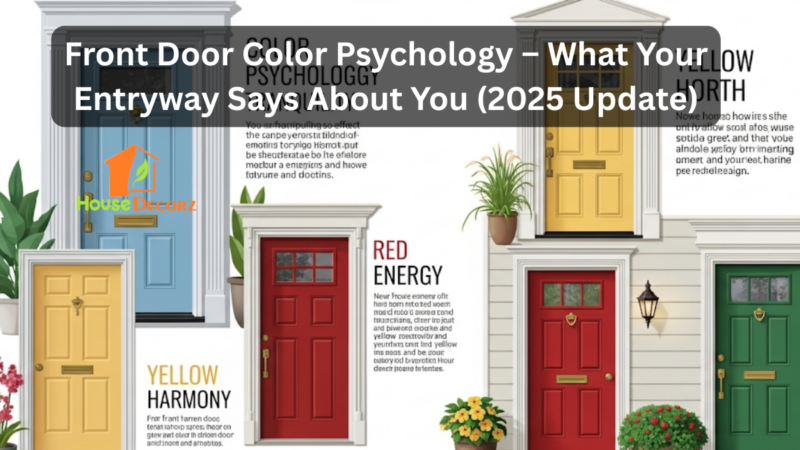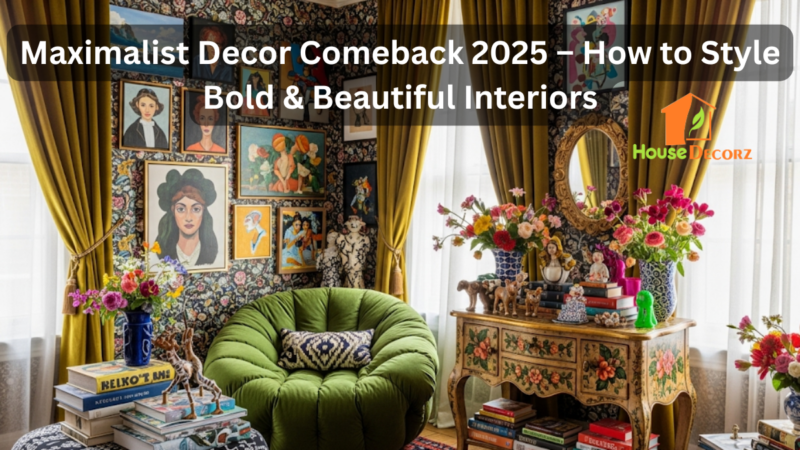Space Illusion Hacks 2025 – Make Small Rooms Feel Huge
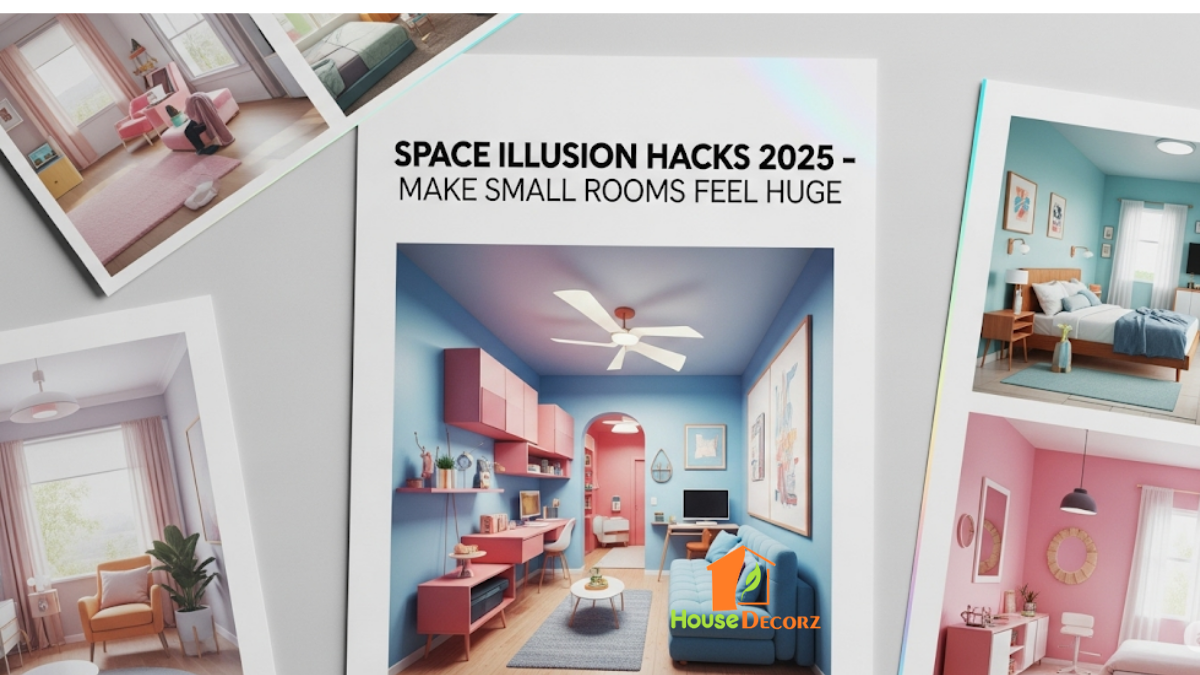
In the pursuit of comfortable and aesthetically pleasing living spaces, the challenge of a small room often looms large.
But what if we told you that size is merely an illusion, a trick of the eye that can be masterfully manipulated? Welcome to the world of Space Illusion Hacks 2025, where innovative design principles and smart styling can transform even the most compact areas into expanses that feel surprisingly vast and open.
Forget cramped quarters; it’s time to embrace the art of visual expansion and unleash the full potential of your small room.
Harnessing the Power of Light and Reflection
Light is arguably the most potent tool in your arsenal for creating an illusion of space. Maximizing both natural and artificial light can dramatically alter the perception of a room’s size.
Unleashing Natural Radiance
The first rule of small room tricks is to let the sunshine in! Heavy, dark curtains can act as visual barriers, making a room feel enclosed. Opt for sheer, light-colored curtains or blinds that can be easily drawn back to expose the full window.
If privacy isn’t a major concern, consider foregoing window treatments altogether. The unobstructed flow of natural light will instantly brighten the space and push the walls visually outwards. Think about how a sunny day makes everything feel more open and airy – the same principle applies indoors.
Strategic Mirror Placement
Mirrors are not just for checking your reflection; they are magicians of expansion. A well-placed mirror can double the perceived size of a room by reflecting light and creating a sense of depth.
For maximum impact, position large mirrors on walls opposite windows or light sources.
This clever arrangement bounces light around, making the room appear brighter and extending the view.
Consider mirrored furniture, such as a mirrored console table or cabinet, to subtly integrate this reflective magic into your decor. However, be mindful of what the mirror reflects; a reflection of clutter will only amplify the problem.
Layered Artificial Illumination
Reliance on a single overhead light source can create harsh shadows and make a room feel smaller. Instead, embrace layered lighting.
Combine ambient lighting (general illumination), task lighting (for specific activities like reading), and accent lighting (to highlight features). Recessed lighting, wall sconces, and tall, slim floor lamps that direct light upwards can draw the eye towards the ceiling, enhancing the perception of vertical space.
Avoid bulky, low-hanging fixtures that can visually weigh down a room. Cooler-toned LED lights can also contribute to a sense of openness and airiness.
The Art of Color and Visual Depth
Color choices and clever painting techniques play a pivotal role in visual expansion. The right palette can truly trick the eye.
The Magic of Light Hues
It’s a well-known principle: light colors make a space feel larger and more open, while dark colors tend to absorb light and make walls feel closer.
Opt for shades like crisp whites, soft creams, pale grays, and serene pastels (think light blues, greens, or lavenders).
These colors reflect light, making the walls recede and creating a brighter, more expansive atmosphere.
When decorating a small room, consider a monochromatic scheme where walls, trim, and even some furniture are in similar, light shades. This creates a seamless flow that blurs the boundaries of the room.
Ceiling and Floor Synergy
Don’t neglect your ceiling and floor! Painting the ceiling a lighter shade than your walls can make it appear higher. A clever trick for adding height is to paint your wall color up to about 10-15 cm below the ceiling, and then paint the remaining band and the ceiling in a crisp white.
This visual “stretch” elevates the room. For flooring, lighter colors like light wood tones, pale tiles, or light-colored rugs can also contribute to an open feel.
Continuous flooring throughout connected spaces, without abrupt transitions, also helps in creating a more expansive perception of the overall area.
Accent Walls with a Purpose
While generally, light colors are preferred, an accent wall can be used strategically to create depth. In a very long, narrow room, a darker, bolder color on a shorter end wall can draw the eye and make the space feel less stretched.
Alternatively, a wallpaper with a subtle, receding pattern can also add visual interest without overwhelming the room.
The key is to use it sparingly and thoughtfully to create a focal point that adds dimension rather than closes in the space.
Smart Furniture and Layout Strategies
The way you furnish and arrange your belongings significantly impacts the perceived size of your room. These Space Illusion Hacks 2025 emphasize thoughtful choices.
Proportionate and Leggy Furniture
Oversized, bulky furniture can quickly overwhelm a small room. Opt for pieces that are proportionate to the room’s scale.
Furniture with visible legs allows light to pass underneath, creating a sense of openness and airiness. Think sleek, slender designs rather than heavy, skirted pieces.
A sofa or armchair that sits directly on the floor can make the space feel heavy and confined.
Embracing Multifunctionality
In a compact living area, every piece of furniture should earn its keep. Invest in multifunctional furniture like storage ottomans, sofa beds, nesting tables, or benches with hidden compartments.
A coffee table that lifts to become a dining table or a desk that folds away into the wall can be game-changers. This minimizes the need for multiple pieces, freeing up valuable floor space.
Vertical Storage Solutions
When floor space is limited, look up! Utilize vertical space with tall, narrow bookshelves, wall-mounted shelving units, or floating shelves.
This draws the eye upwards, making the ceiling appear higher and the room feel more expansive. Built-in cabinetry that extends to the ceiling can also provide ample storage without consuming precious floor area, creating a streamlined and uncluttered look.
Strategic Furniture Placement
Resist the urge to push all furniture against the walls. While seemingly counterintuitive, pulling a few pieces slightly away from the wall can create an illusion of more space behind them, adding depth to the room.
Arrange furniture to create clear pathways, ensuring easy movement and preventing a cluttered, obstacle-ridden feel. Symmetrical arrangements can also contribute to a sense of order and spaciousness.
The Decluttering Imperative
Perhaps the most fundamental yet often overlooked small room trick is decluttering. A messy, overstuffed room will always feel smaller, regardless of other design efforts.
The “Less is More” Philosophy
Clutter is the enemy of spaciousness. Regularly purge items you no longer need or use. Embrace a minimalist mindset where every item has a purpose and a designated home. This doesn’t mean your room has to be devoid of personality, but rather, curated and intentional.
Organized Storage
Invest in smart storage solutions that help you keep things tidy and out of sight. Baskets, decorative boxes, and drawer organizers can help contain small items.
Consider under-bed storage, over-the-door organizers, and modular storage systems that can be customized to your needs. When everything has its place, the room instantly feels larger and more peaceful.
Invisible Storage
Think about creative ways to “hide” your belongings. Built-in shelving with doors, storage within furniture, or even a well-organized closet can drastically reduce visual clutter. The less you see on surfaces, the more expansive the room will appear.
By strategically implementing these Space Illusion Hacks 2025, you can transform your small rooms into havens of spaciousness and comfort. It’s about working smarter, not harder, to create environments that feel truly expansive and inviting.
Recommendation
Best Eco-Friendly Paint Brands in USA 2025 – Non-Toxic Colors for Every Room
Top 10 Living Room Color Trends for 2025 – What Designers Are Using This Year
Small Bedroom? 7 Genius Space-Saving Hacks for 2025
10 Wall Panel Design Ideas to Upgrade Your Living Room
How to Style an Open Kitchen and Living Room Layout
FAQ Section
Q1: What are the best paint colors to make a small room look bigger?
A1: Light, cool, and neutral colors are highly effective. Think crisp whites, pale grays, soft blues, mint greens, and light pastels. These shades reflect light and make walls appear to recede, contributing to a sense of openness.
Q2: How can mirrors be used most effectively in a small room?
A2: Place large mirrors strategically on walls opposite windows to reflect natural light and outdoor views, instantly doubling the perceived space. You can also use multiple smaller mirrors in a gallery wall arrangement to create a sense of depth and visual interest without overwhelming the room.
Q3: What kind of furniture should I avoid in a small room?
A3: Avoid oversized, bulky furniture that sits directly on the floor without visible legs. Also, steer clear of dark, heavy pieces that absorb light and make the room feel cramped. Opt for furniture with clean lines, light colors, and a design that allows light to pass underneath.
Q4: Is decluttering truly essential for making a small room feel larger?
A4: Absolutely. Clutter is the biggest enemy of spaciousness. A cluttered room, no matter how well-lit or strategically colored, will always feel smaller and more chaotic. Regular decluttering and effective storage solutions are fundamental to creating an expansive feel.
Q5: Can patterned wallpaper or rugs be used in small rooms?
A5: Yes, but with caution. For wallpaper, opt for subtle, receding patterns or vertical stripes to add height. For rugs, choose lighter colors with simple patterns. A large rug that covers most of the floor can actually make a small room feel more unified and expansive, rather than breaking up the space with multiple small rugs.
Final Thought
Embracing Space Illusion Hacks 2025 isn’t about magical transformations; it’s about intelligent design. By understanding how light, color, furniture, and organization impact our perception of space, you gain the power to craft rooms that feel far grander than their actual dimensions.
So, take these small room tricks and apply them thoughtfully. You’ll be amazed at how a few strategic changes can unlock the hidden potential of your home, making every corner feel not just bigger, but also more comfortable, functional, and uniquely yours. Ready to see your small space in a whole new light?


